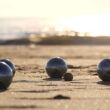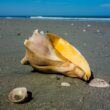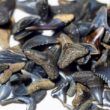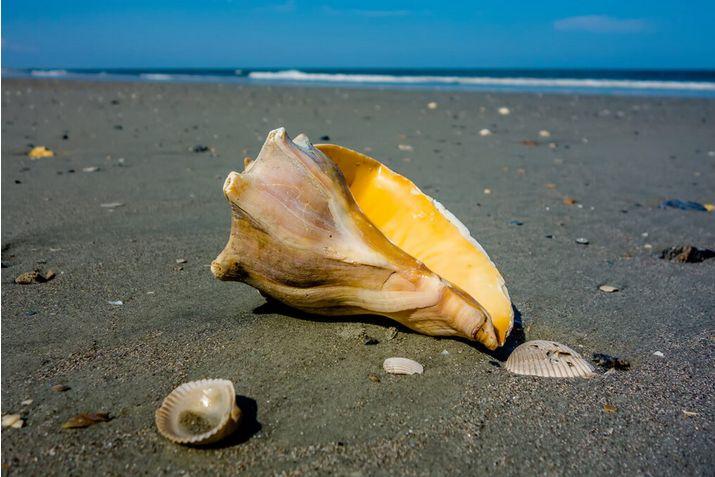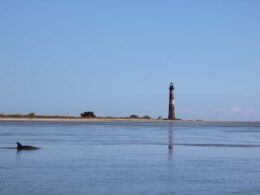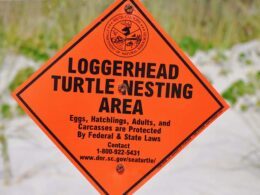To some of us, it’s second nature — walking along the beach with our eyes trained on the sand and the lapping surf, looking for treasures cast from the sea. Shells, shark’s teeth, starfish, sand dollars . . . all seem like perfectly innocent (not to mention sought-after) souvenirs to commemorate time at Folly.
But should you take the treasure home that you find during a day at the beach? Sure, it’s not likely you’ll see anyone hauled off of Folly on charges of illegal beach-combing behavior. However, certain regulations do exist in some parts of South Carolina that are worth making a mental note of.
Where empty shells are concerned, you’re probably OK. Not only are they plentiful and essentially supplied by the ocean in never-ending rotation, but the general consensus is that the coastal ecosystem isn’t upset too much when these shells go missing.
One thing to keep in mind? Hermit crabs need to “hop” shells as they grow, so try to leave a few big, intact shells for those fun fellas. Oh, and don’t forget to peer inside of any intact shell you pick up to check for any hermit crabs that may already have made their home there.
In some areas, it is actually illegal to collect live specimens or living sea creatures from beaches. While there doesn’t appear to be an official ruling on this at Folly, you should always respect the local bio-diversity — including sand dollars and starfish.
If you aren’t sure whether or not the sand dollar you’ve found is still alive, one indicator is its color. Is it dark purple, reddish brown, gray, or green? It’s alive. It will also be covered in tiny, fuzz-like hairs called cilia. You can test your theory by gently turning the sand dollar over and using your finger to touch the cilia. If they move, it’s definitely still alive and should be (again, gently) returned to the water.
The only sand dollars that are safe to take home have died and have already been bleached white or grayish white by the sun. You should no longer be able to see the cilia, and the sand dollar’s appearance and texture will be smooth. This is a sand dollar skeleton, also called a “test.”
It can be a bit easier to determine whether or starfish is alive or not, because their movement is less subtle than that of a sand dollar. When you gently touch its underside, its little tube feet will retract or move. Pay close attention, since starfish don’t move with great frequency.
If a starfish is firm and its tube feet retract when you carefully touch its underside, it is alive and should be left alone — there is a sizable fine for taking live sea creatures from South Carolina beaches. If a sand dollar is alive, it will be covered in short, velvety spines and appear dark purple, reddish brown, gray, or green. If you come across a white or grayish white one sans fuzz, you’ve found a sand dollar skeleton or “test.”
Should you ever feel unsure about which shells or specimens are okay to collect, consider keeping your eyes peeled for shark’s teeth. They’re iconic, exciting to find, and make great keepsakes.


